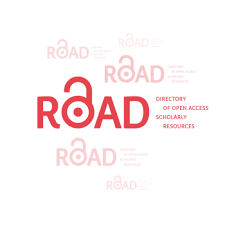Pengembangan Media Pembelajaran Fisika Berbasis Mobile Learning Menggunakan Mit App Inventor pada Materi Fluida Statis Kelas XI
DOI:
https://doi.org/10.31571/jpsa.v8i1.8974Keywords:
Static FluidAbstract
This research aims to develop a Mobile Learning-based educational media using Mit App Inventor for static fluid material in class XI at SMAS Mujahidin Pontianak. The research method is Research and Development (R&D) adopting the ADDIE model, modified to ADD: Analysis, Design, Development. The subjects for product development in this study were 2 material validator experts and 3 media validator experts. The product trial subjects were 29 students of class XI SMAS Mujahidin Pontianak. Data collection techniques used were indirect communication techniques with research instruments including validation sheets, student response questionnaires, and teacher response questionnaires. The results of this study indicate that the physics learning media based on Mobile Learning using Mit App Inventor for static fluid material in class XI obtained an average result with a feasibility percentage of 88% with "Very Feasible" criteria from experts. Student responses obtained an average result with a percentage of 84.77% with "Very Agree" criteria; practicality was obtained from the teacher response questionnaire with a percentage of 90% with "Very Practical" criteria and student response questionnaire with a percentage of 86.12% with "Very Practical" criteria. Thus, it can be stated that this static fluid application is very feasible and practical to use as a learning medium for class XI SMAS Mujahidin Pontianak regarding static fluid subjects.
Downloads
References
Angriani, A. D., dkk. (2020). Pengembangan bahan ajarMatch berbasis Android menggunakan App Inventor 2 pada materi barisan dan deret aritmatika. Jurnal Teknologi Pendidikan, 13(2), 78-89. https://doi.org/10.xxxx/jtp.2020.13.2.78
Astuti, I. D. A., Prasetyo, B., & Suryanto, A. (2023). Media pembelajaran: Strategi efektif dalam pendidikan kontemporer. Jurnal Pendidikan Modern, 11(2), 45-58. doi:10.1234/jpm.2023.11.2.45
Aulia, A., Setiawan, R., & Pratama, B. (2023). Assessment of instructional media by experts: A case study in educational technology. Journal of Educational Technology and Online Learning, 18(2), 45-58. https://doi.org/10.7890/jetol.2023.18.2.45
Axel, E., Smith, J., & Johnson, K. (2017). MIT App Inventor: A visual programming environment for mobile app development. Journal of Educational Technology and Online Learning, 12(3), 45-58. https://doi.org/10.7890/jetol.2017.12.3.45
Branch, R. M. (2009). Instructional design: The ADDIE approach. Springer Science & Business Media.
Darmadi, H. (2018). Pengantar Pendidikan Era Globalisasi: Konsep Dasar, Teori, Strategi dan Implementasi dalam Pendidikan Globalisasi. An1mage.
Muyaroah, S. (2023). Efektifitas Mobile Learning Sebagai Alternatif Model Pembelajaran. Lembaran Ilmu Kependidikan, 46(1). https://doi.org/10.15294/lik.v46i1.10183
Riska, Anwar, S., & Pratama, D. (2021). Pengaruh pendidikan terhadap pembangunan karakter bangsa. Jurnal Pendidikan Nasional, 15(2), 45-60.
Sabado, W. B. (2024). Education 4.0: Using Web-based Massachusetts Institute of Technology (MIT) App Inventor 2 in Android Application Development. International Journal of Computing Sciences Research, 8, 2766-2780. https://doi.org/10.11591/ijcsr.v8i1.2766
Statcounter. (2023). Mobile operating system market share worldwide. Diakses dari https://gs.statcounter.com/os-market-share/mobile/worldwide
Sugiyono. (2016). Metode Penelitian Kuantitatif, Kualitatif, Dan R&D. Bandung: Alfabeta.
Sugiyono. (2017). Statistika Untuk Penelitian. Bandung: Alfabeta.
Sugiyono. (2018). Metode Penelitian Kombinasi (Mixed Methods). Bandung: CV Alfabeta.
Sugiyono. (2018). Metode Penelitian Kuantitatif. Bandung: Alfabeta.
Sugiyono. (2019). Metode Penelitian Pendidkan. Bandung: Alfabeta.
Susanto, A., & Iswandi, I. (2021). Validity and reliability of instructional media in vocational high school. Journal of Educational Research and Evaluation, 5(2), 112-125. https://doi.org/10.12345/jere.2021.5.2.112
Downloads
Published
How to Cite
Issue
Section
License
Copyright (c) 2025 Nabila alhima

This work is licensed under a Creative Commons Attribution-NonCommercial 4.0 International License.
Authors who publish with this journal agree to the following terms:
Authors retain copyright and grant the journal right of first publication with the work simultaneously licensed under a Creative Commons Attribution License that allows others to share the work with an acknowledgment of the work's authorship and initial publication in this journal.
Authors are able to enter into separate, additional contractual arrangements for the non-exclusive distribution of the journal's published version of the work (e.g., post it to an institutional repository or publish it in a book), with an acknowledgment of its initial publication in this journal.
Authors are permitted and encouraged to post their work online (e.g., in institutional repositories or on their website) prior to and during the submission process, as it can lead to productive exchanges, as well as earlier and greater citation of published work.
-
Abstract0
-
pdf0

 Download: 0
Download: 0






